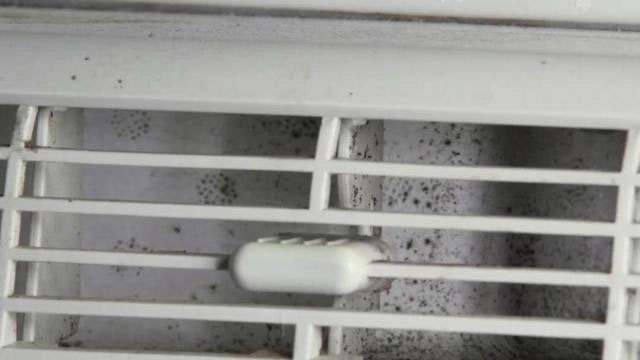How to effectively detect and treat mold in air conditioners
If you notice your air conditioner smells musty, it's a sign of a serious problem.
Air conditioners make our lives much more comfortable, especially when the weather is hot. But if your equipment is not well maintained or has not been used for a long time, it can become an ideal environment for mold growth.
And because mold has the potential to cause, or exacerbate various health problems, we wouldn't want to see them anywhere in our homes, especially inside an air intake and exhaust device. gas. Here are ways to know if your air conditioner has mold and if so, what needs to be done to fix it.
Signs that the air conditioner has mold

Severe signs of mold on the air conditioner unit.
Unless mold is clearly visible on the outside of the device (as shown in the image above), it is not always easy for the user to know if they are present. Usually, the first thing people notice will be the musty smell that only appears when the air conditioner is turned on.
Another potential sign is that someone in your family is experiencing new respiratory symptoms or worsening old symptoms - such as coughing, wheezing or shortness of breath - or a frequent headache or sore throat. more often. While it's not a telltale sign, mold is one possible reason respiratory symptoms begin or worsen.
How to know if there is mold in the air conditioner

Check carefully to avoid confusing mold with dirt.
Always remember that before performing any form of testing that may involve mold, you need to wear a mask so you don't breathe in them, or the dirt.
Mold can be black, brown, green, white, pink, yellow, or orange. They can also appear as black dust that accumulates around the air conditioning vents. Therefore, check them carefully and carefully to avoid confusing them with dust and dirt commonly found on household electrical appliances.
Even if mold is not visible from the outside of the device, they may be growing inside. Here's how the test scores for some types of air conditioners:

Lighting is an easy way to find mold.
For wall-mounted, window-mounted or mobile devices: Unplug, then remove the front or back panel to access the filter. Remove the filter and look for stains, especially brown, black, and green blotches, or what looks like a white or gray powder. If you can't see it, use a flashlight to check the inside for signs of mold.
For central design air conditioners: Do not try to separate any parts. Instead, shine a flashlight inside the device and look closely. Or look for any signs of mold on the fans, air ducts, and vents. And remember to always check all outdoor units if possible.
What to do if mold is found in the air conditioner
The first thing to do if you detect (or suspect) mold is present in your air conditioner is to stop using it. This means that the unit needs to be turned off or, if it is a central air conditioner, it needs to be stopped. Continued use of contaminated equipment can spread mold throughout your home.

You can replace the filters or clean them yourself.
If your window-mounted, wall-mounted or portable air conditioner has a significant amount of mold that spreads deep inside the device and electronic components, unfortunately you will most likely have to replace them completely. The opportunity to completely treat mold in every nook and cranny is not high, and the cost, if any, will not be small. But if the mold is confined to the filters, you can replace them or try to clean them yourself.
First, wear a mask, gloves and eye protection. Then remove the filter plate gently and carefully. Next, use a soft-bristled brush (throw away after use) to remove any visible debris and mold from the filter.
Next, mix a solution of one part detergent (dishwashing liquid, soap.) with 10 parts water into the basin, then completely submerge the filter in water and soak for at least 10 minutes. Then, rinse the filter with clean water and let it air dry. Remember to clean the whole inside and outside of the cooler, then put the filter back in the same position and turn on the air conditioner for a test run.
After about 15 to 30 minutes of testing, if the smell is still bad, call the technical experts for assistance with handling.
And if you find mold on your central air conditioning unit, it's time to call the experts. Because this is not something you can solve on your own.
- Mold (Aspergillus) - Doctor of fermentation
- Fossilized pig mold in amber 30 million years
- Chopsticks mold: Assassin causes cancer
- Is it dangerous to eat moldy bread?
- Avoid indoor air pollution
- Is mold food safe?
- Distinguish edible and non-edible mold
- Air conditioners save electricity
- Microorganisms, mold 'attack' Space Station: Will they harm astronauts?
- Unexpected character identity in the 18th century portrait
- Detection of the p53 gene inhibits the growth of cancer cells
- Automobile air conditioners, solar
 'Barefoot engineer' invents a pipeless pump
'Barefoot engineer' invents a pipeless pump Process of handling dead pigs due to disease
Process of handling dead pigs due to disease Radiometer
Radiometer Warp Engine: Technology brings us closer to the speed of light
Warp Engine: Technology brings us closer to the speed of light